I just spent the past five days at Arnold’s Wildlife Rehabilitation Center in Okeechobee, Florida. I created a photo album with the pictures I took the past few days. Towards the bottom of the album are numerous videos I took of the animals, some are short and others are two or three minutes long.
Over the past several years I have visited here numerous times, I always write a story and post a photo album of my visit. Every time I visit I get to see different animals and also new habitats for some of them. The main things that I noticed this visit that was different from previous visits were a 3 year old Camel named Lulu and a new fenced in area is being built for her, an albino Wallaby named Sidney who happens to like peanut butter, two rare black and rust chickens that have a pom pom top on their head, a calf named JJ, 3 three week old Vietnamese Fishing Cat babies, and a two day old Ringtail Lemur. Both the Ringtail Lemur and the Vietnamese Fishing Cats are rare and endangered species. It was interesting watching the Ringtail Lemur baby change over the five days. He got more active and was climbing on his mom and trying to climb on the rope and cage and he also tried to eat the food his mom was eating. I also got some pictures when mom was resting, thinking most probably that she wished the little one would lay still for a few minutes at a time.
Owner Sue Arnold and I have become good friends over the many years that I have been going there. I have posted several albums and written several stories about my previous visits there over the years, you can look at those photos on my photo album page. Every time I go there, in addition to the animals that are permanent residents there are always new animals that I get to see and sometimes I get to hold and pet them too. Sue’s goal is to rehabilitate and get the animals that are brought to them healthy so they can be released into their natural habitat. There are animals that can’t be released for various reasons so they become permanent residents. Angela and Freddy live on the premises and they help Sue take care of the animals and also help to feed them and do whatever else is needed at the Wildlife Center. Freddy is really handy and he can fabricate things needed from spare parts he collects. He also prepares the meat and chicken that are fed to the panthers and other wild cats and animals that need to eat protein. Among other things, Angela takes care of the animals in the hospital and nursery and she feeds and cleans cages for many of the animals. She really gets attached to the animals and helps to name them.
If you are looking for a worthwhile charity to make donations to I would highly recommend Arnold’s Wildlife Rehabilitation Center. All of the money donated goes to the care and feeding of the animals, 100% of it is used for the animals. County, local, and state officials, and many other people bring animals to Sue that need medical help, food, shelter, or pets and animals that they can no longer keep for various reasons, etc., and none of these agencies or people provide funds for the animals upkeep or medical bills, so the care and feeding and also vet bills incurred all come out of Sue’s limited funds that she uses for the animals on premises. Currently, and most of the time, there are approximately 300 animals at Arnold’s Wildlife Rehabilitation Center. It’s important to save animals and especially the rare and endangered ones so that they will still be around for future generations to see in person, not just in a book. Sue does her best to breed the animals, most especially the rare and endangered species.
My visit for the entire 5 days was spectacular. I had a great time. I had the privilege of feeding the animals treats and food. I gave them peanut butter and banana sandwiches, cereal, fruit, bread, and other types of foods. The Capuchin monkeys liked to drink water from the hose like people do. They would also put their hands in the spray and then wipe the water on their arms. It’s really interesting to watch the animals interact with each other and also to see the different personalities they have, and also how they decide to eat their food. Some of them just eat their food fast, others savor it and take their time enjoying it.
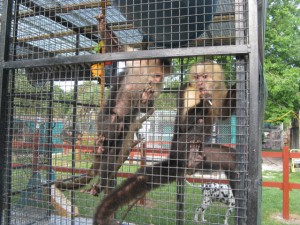 Zeke the Capuchin monkey who is about 38 years old has no teeth because his first owner had them removed because they didn’t want Zeke to bite. So for his entire life he has had to eat soft foods. I find Zeke one of the animals that I love to watch the most and also I like to give him the most treats. I have to sort of trick Cricket his cagemate and give her food first so that I can give Zeke his food. Cricket thinks she should get it all. When Zeke gets his treat he takes it and usually sits and looks at it and then decides how he wants to eat it. Sometimes he tastes it first then sits and figures it out. Sometimes he just nibbles and eats it slowly, other times he takes his hands and separates the food item and then enjoys eating it. Like with an orange slice, he might at first suck some of the juice out of the slice, then he separates the membrane from the fruit and then eats it slowly. If it’s a lollypop he sucks on it slowly and I can tell he really enjoys it. Peanut butter sandwiches he eats the little piece whole sometimes, and other times he separates the two pieces of bread.
Zeke the Capuchin monkey who is about 38 years old has no teeth because his first owner had them removed because they didn’t want Zeke to bite. So for his entire life he has had to eat soft foods. I find Zeke one of the animals that I love to watch the most and also I like to give him the most treats. I have to sort of trick Cricket his cagemate and give her food first so that I can give Zeke his food. Cricket thinks she should get it all. When Zeke gets his treat he takes it and usually sits and looks at it and then decides how he wants to eat it. Sometimes he tastes it first then sits and figures it out. Sometimes he just nibbles and eats it slowly, other times he takes his hands and separates the food item and then enjoys eating it. Like with an orange slice, he might at first suck some of the juice out of the slice, then he separates the membrane from the fruit and then eats it slowly. If it’s a lollypop he sucks on it slowly and I can tell he really enjoys it. Peanut butter sandwiches he eats the little piece whole sometimes, and other times he separates the two pieces of bread.
A year or two ago, a woman’s husband died and she couldn’t take care of Cricket, the female Capuchin monkey that her husband had, so she gave it away. Cricket wasn’t happy in her new home and somehow Sue was contacted and she said she would take Cricket. So Cricket was put into the same cage as Zeke and it was a great match. Over time, Zeke took over making sure that Cricket is happy and he takes their bedding and airs it out during the daytime and then shakes out the blankets and puts them back into the area where they sleep. He always lets her take the food she wants and doesn’t fight her for any of it. He does get his share too. Cricket loves to drink water from the hose when her cage is being cleaned. So whoever has the hose makes sure to put it on a slow stream for her and the other monkey who likes to drink from the hose. It’s really cute to watch.
Here are a few links to a few videos, there are many more videos in the photo album with Zeke eating an orange, the otters swimming, a mama hen and baby chicks, me feeding Lulu the Camel bread, the Kookaburra’s singing, the Lemurs and Capuchin monkeys climbing, and the albino Wallaby hopping.
I want to thank Alexa Produce in Lighthouse Point for donating fruit and vegetables that I brought to Sue’s to feed the animals. I stopped by before I left home and told Alan the manager that I was going to a wildlife rehabilitation center and asked if he has any fruit and vegetables that he was going to discard or that he can’t sell, and he gave me two boxes of items.
At the Wildlife Center I’ve learned that nothing there goes to waste. Banana peels, scraps, etc. are fed to many of the animals, so if some animals cannot eat a particular type of food or parts of it, other animals can eat it. I even got to feed bread to Lulu the Camel. She took an entire loaf of Italian bread in her mouth and chewed and chewed until the entire loaf was eaten. I watched a very large tortoise try to eat a whole green pepper. That was interesting. Since the only thing the tortoise could use to eat is his mouth, he couldn’t hold the green pepper still and it has a smooth round surface. So for a minute or so every time he put his mouth on the pepper to eat it, it rolled a little. He would try again and again, and finally he was able to get a bite of it and then from that little hole he ate more and more. He didn’t seem to get frustrated and give up. The tomatoes were easier for him to eat.
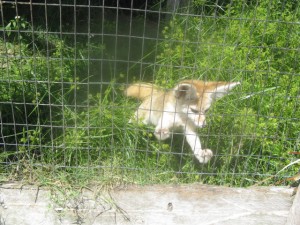 The Fennec Foxes are really cute, they look like little dogs with big ears. They like to sleep quite a bit. They were a bit hesitant when I went to give them treats, but one got brave and the others watched and decided to get some too. After the first time, whenever they saw me with treats they came to the side of the cage so I would give them some too.
The Fennec Foxes are really cute, they look like little dogs with big ears. They like to sleep quite a bit. They were a bit hesitant when I went to give them treats, but one got brave and the others watched and decided to get some too. After the first time, whenever they saw me with treats they came to the side of the cage so I would give them some too.
There are still many of the same animals there too that I saw in previous visits, such as Foxy Brown the rare and endangered Fox Squirrel who started a 5 acre grass fire a few years ago when she chewed an electrical wire, she also fried herself. I wrote her story in this post. There are also rare and endangered Indonesian Jade Peacocks, Cotton Top Tamarins, and the Vietnamese Fishing cats who recently had three babies, which had to be removed at birth so that the parents didn’t eat them. Yes, it’s sad, but they ate the babies in the first litter. Now the three babies are being handfed and cared for by Angela and Sue.
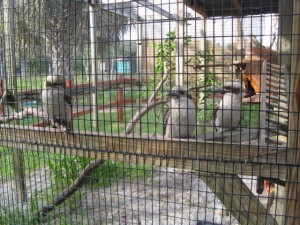 The Kookaburra cage is next to the Ringtail Lemur cage and I spent quite a bit of time there because I liked watching the mama and baby Lemur. The dad was really attentive and he helped the mom groom the baby and he let the baby climb on him too. Last year there were only two Kookaburra’s now there are three. They have a very distinct call. It’s really loud, especially when the two black and while Lemurs in a cage near them make their really loud calls too. It sounds like someone is being harmed. Then in the big field near those cages are donkeys, llamas, deer, horses, and a few other types of animals. The animals calls then sometimes get the donkeys in the mood to bray and then there is a symphony of animals sounds and calls. There are a few new macaws and cockatoos and they are REALLY loud. They do talk and say various phrases which is okay, but at other times they just screetch loudly and also make sounds they heard in their previous home. One parrot makes the sound of a vehicle backing up. Another sound is like the old internet connection like when AOL connected the computer to the landline.
The Kookaburra cage is next to the Ringtail Lemur cage and I spent quite a bit of time there because I liked watching the mama and baby Lemur. The dad was really attentive and he helped the mom groom the baby and he let the baby climb on him too. Last year there were only two Kookaburra’s now there are three. They have a very distinct call. It’s really loud, especially when the two black and while Lemurs in a cage near them make their really loud calls too. It sounds like someone is being harmed. Then in the big field near those cages are donkeys, llamas, deer, horses, and a few other types of animals. The animals calls then sometimes get the donkeys in the mood to bray and then there is a symphony of animals sounds and calls. There are a few new macaws and cockatoos and they are REALLY loud. They do talk and say various phrases which is okay, but at other times they just screetch loudly and also make sounds they heard in their previous home. One parrot makes the sound of a vehicle backing up. Another sound is like the old internet connection like when AOL connected the computer to the landline.
Did you know that peacocks roost in trees, yes, believe it or not, they can fly. They also like to be on rooftops. I saw some peacocks with beautiful plumes but no tail feathers. I asked Sue why and she said they are young male peacocks. They still are beautiful but they don’t have the long tail with the beautiful feathers to carry around yet. Peacocks are very loud and noisy. This is a video of the peacock displaying his feathers and cooling off.
There is also an incredible Butterfly Garden. There are many species of butterflies here. At one of the entrances to the Butterfly Garden is a viewing platform where visitors can see the entire garden in a glance. When you are walking the path through the garden you cannot tell that it’s one big butterfly with the body, head, and antennae in the center. I wasn’t able to get the entire garden in one picture.
If you or anyone you know wants to have a nice outing for a day, visit Arnold’s Wildlife Rehabilitation Center in Okeechobee, Florida. There is a donation box as you enter the zoo area. It’s $10 for an adult and children under 12 are free. Believe it or not, there are people who walk through and do not make a donation, or maybe they give $1 for a group of several people. Maybe it’s all they had, we don’t know. All of the money donated goes to the care and feeding of the animals. Perhaps you know of an SUV or enclosed vehicle in good condition that can be donated here, I have a feeling it would be greatly appreciated as well. The vehicle used now to transport the animals is rather old and not in very good condition.
It’s expensive to buy the amount of food needed, pay vet bills, and pay the other related costs of operating this wildlife rehabilitation center and taking care of the animals. I saw how much food is used in one day to feed the animals. It’s astonishing. This is also a great place to donate your time. I got to see how much work it is to maintain the property, cages, feed and provide medical care for the animals. The baby animals need special attention as do the sick ones. I know any time you would like to volunteer here would be greatly appreciated. Whether you like to do physical work or not as physical, there are always things to do like cutting up fruit and vegetables for food, filling the animals water bowls, rinsing out cages with a hose, fixing fencing and cages, building pens, and so much more.
If you go to visit feel free to bring some food. I usually bring several boxes of frosted mini shredded wheat, jars of creamy peanut butter, small elbow pasta, American cheese, large cans of peaches, whole grain bread, and fruit. Even bags of dum-dum lolly pops are good. Aldi grocery store has the lowest price for the cereal, peanut butter, and pasta. When the animals get a treat it’s the time to look at them closely and make sure they are healthy and that there are no areas that need attention. Tell Sue that you read about the wildlife center from me.
To visit Arnold’s Wildlife Rehabilitation Center, if you are near I-95 the best way to go is to take either Blue Heron Blvd. if you are coming from the south, or Northlake Blvd. if you are coming from the north. Go west on either of those roads until it dead ends at 710, then go right on 710. From Blue Heron Blvd, go approximately 45 miles, and from Northlake about 41 miles, until you see a small street sign that says 128. Make a right on 128 then stay on that road for approximately 21 miles until you come to a blinking traffic light which is 441. Stay straight, go past the light, then go 2.5 miles and then you will see a sign to make a left on a street which goes directly to the wildlife center. A majority of the trip is spent on back roads with very little traffic. It’s a scenic and relaxing drive.

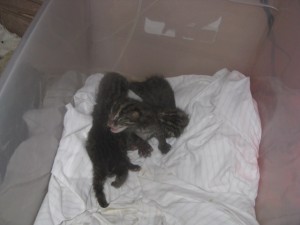
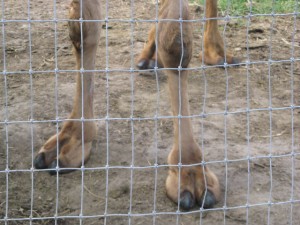
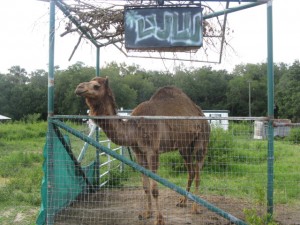
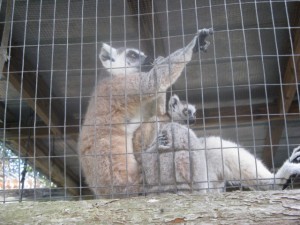
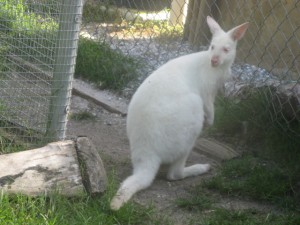
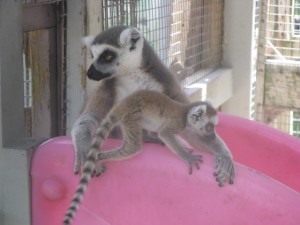
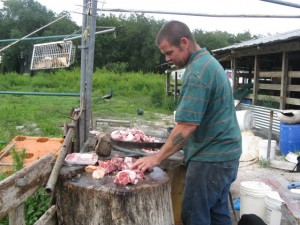
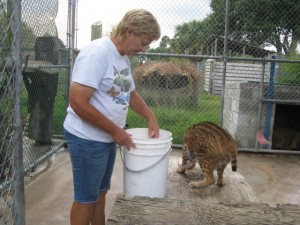
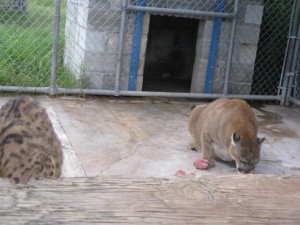
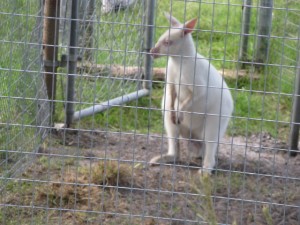
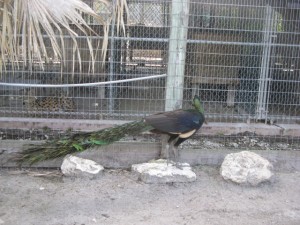
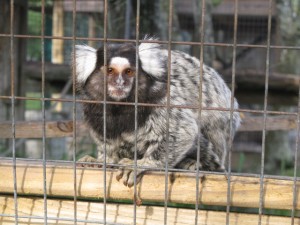
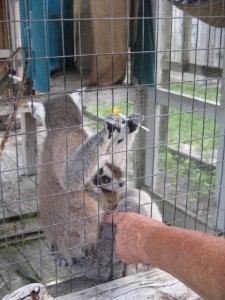
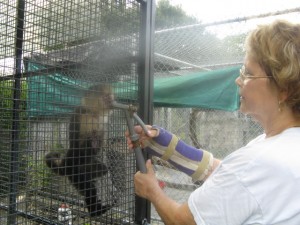
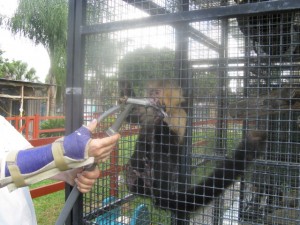
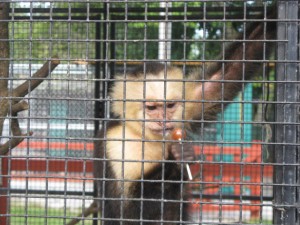
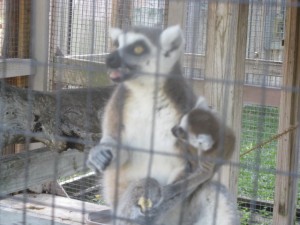
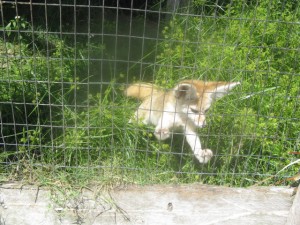
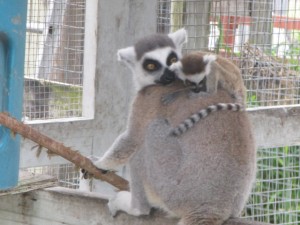
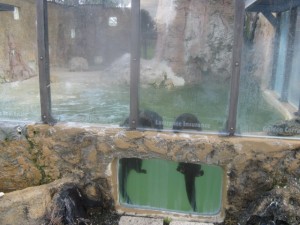
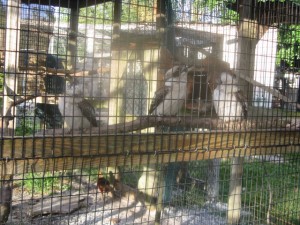
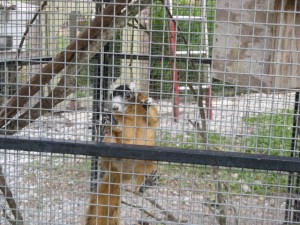
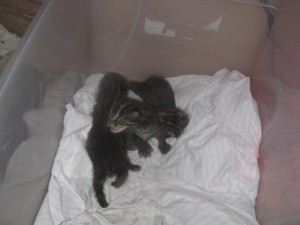
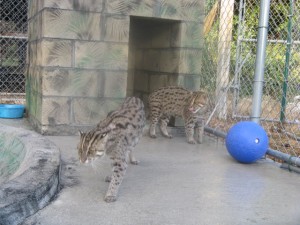
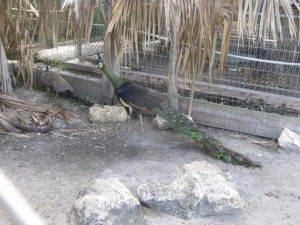
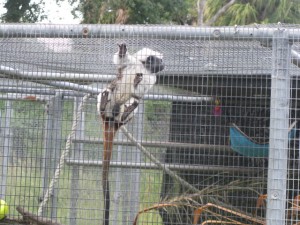
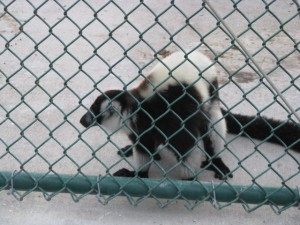
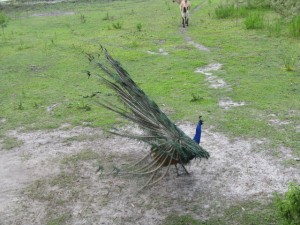
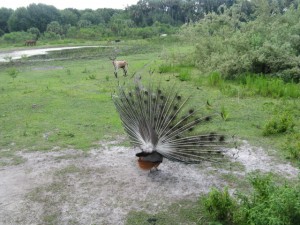
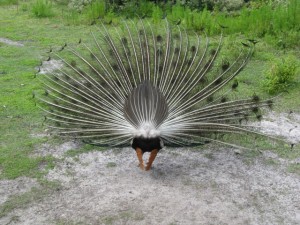
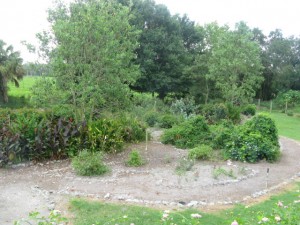
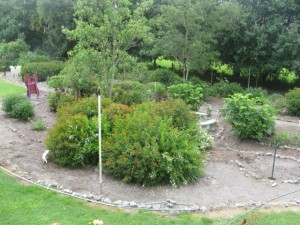
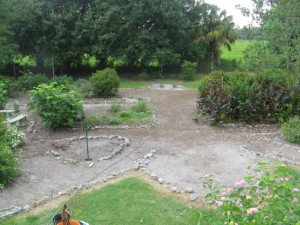
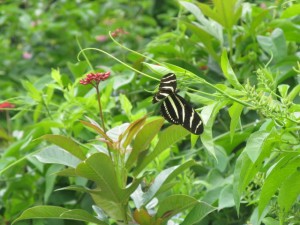
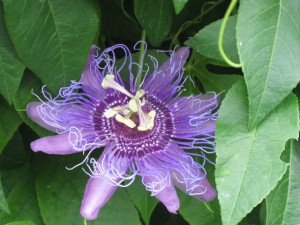
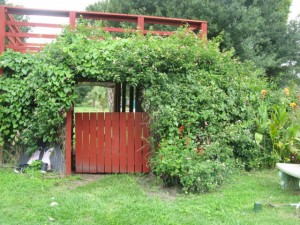

Carol! I just spent an hour with you, here, at the rehab center. I learned a lot and smiled a lot. Thank you for the guided tour! It is such a special place managed by such special people. It is such a gift to interact with nature in all it’s glory and wonder.